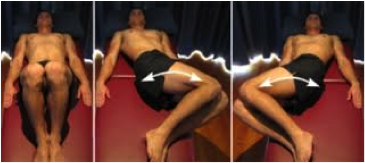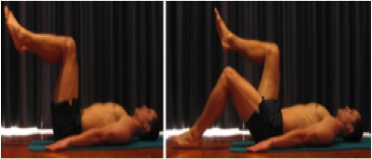Preventing Lower Back Pain
Chronic Lower Back pain (pain lasting more than 3 months) is a common condition amongst many people.
There are some simple key steps to preventing Lower Back Pain (LBP). Firstly it’s important to reduce any excess stresses and strain on your back and ensure that your back and core muscles are strong and supple. If you have recurring bouts of LBP, the following advice may be useful:
Lose any excess weight: Some of the most common obesity-related problems include musculoskeletal and joint related pain. Attention to overall weight loss is important as every kilogram adds strain to the muscles and ligaments in the back.
Posture: How you sit, stand and lie down can have an important effect on your back. When standing try to remain upright with your back straight and even weight distribution between your feet. When sitting or driving try not to slouch and ensure that your lower back is properly supported and your bottom is positioned at the back of the chair.
Lifting and handling: One of the biggest causes of back injury, especially at work, is lifting or handling objects incorrectly. When lifting, start in a good position with your feet shoulder width apart. Keep the load close to your waist/torso and let your legs lift the load. Remember to always keep your back straight, tighten the stomach muscles and bend your knees. Avoid twisting your back or leaning sideways, especially when your back is bent. Turning by moving your feet is better than lifting and twisting at the same time. (Tip: Push rather than pull – if you have to move a heavy object across the floor, it is better to push it rather than pull it).
Exercise: Exercise is a fantastic way of preventing/managing LBP or reducing any LBP you might have. Consult a physiotherapist if you have any doubts about the suitability of the exercises mentioned. Exercises such as regular walking, swimming and core strengthening, help to strengthen the muscles that support your back without excessively straining it or subjecting it to sudden jolts. Activities such as Pilates can also improve the flexibility and strengthen your core and lower back muscles. Below are also some simple exercises which you can do at home to help prevent or relieve LBP.
Supine Abdominal Holds
- Lie on your back and bend one knee, placing your foot flat on the floor, and extend the other leg straight out.
- Find the point where your back naturally arcs, and place your hands on the floor with palms down.
- Without using your lower back or spine, raise your head and shoulders off the floor. Imagine using your chest as the hinging point rather than your abdomen as you would in standard crunch. Hold at the top for at least 5 seconds, then slowly lower. Repeat all reps on one side, and then switch legs.
Bridges
- Lie on your back with your knees bent and your feet flat on the floor.

- Raise your hips off the floor (by gently pressing your heels into the ground and squeezing your bottom) so that your body forms a straight line from your shoulders to your knees.
- Pause at the top then slowly lower your body back to the floor. Repeat 10 times to start with. Repeat twice.
Rotation in Lying
- Lie on your back, with your knees bent and feet flat and together, with your shoulder firmly on the floor.
- Gently take both knees from side to side as far as possible (pain-free )
- Repeat 10 – 20 times.
Heel Taps
- Lying on your back in neutral spine with your hands by your side and your hips and knees bent to 90 degrees.
- Maintain activation of your transversus abdominis and pelvic floor muscles throughout the exercise.
- Slowly lower one leg until your heel touches the ground and then return to the starting position. Keep your spine and pelvis completely still and breathe normally. Perform 10 times alternating between legs
Where to go next?
If you’re suffering from Lower Back Pain College Physio is able to assist you. Check contact/booking details on SPACES.
College Physiotherapists










